Refine search
Actions for selected content:
440 results
Chapter 22 - ‘A curious creature from the market’
- from Part IV - Worlds of Print
-
-
- Book:
- African Literature in Transition
- Published online:
- 23 October 2025
- Print publication:
- 06 November 2025, pp 427-444
-
- Chapter
- Export citation
2 - Value in Motion: The Inheritance of Merchant Capital and Debates over Credit
-
- Book:
- The Capitalist Self
- Published online:
- 12 October 2025
- Print publication:
- 30 October 2025, pp 57-100
-
- Chapter
- Export citation
Chapter 3 - The Predictive Mind in Literature
-
- Book:
- Cognition and the Arts
- Published online:
- 14 September 2025
- Print publication:
- 23 October 2025, pp 64-89
-
- Chapter
- Export citation
Introduction
-
- Book:
- American Modernism and the Cartographic Imagination
- Published online:
- 09 October 2025
- Print publication:
- 23 October 2025, pp 1-29
-
- Chapter
- Export citation
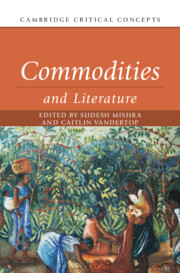
Commodities and Literature
-
- Published online:
- 14 October 2025
- Print publication:
- 09 October 2025
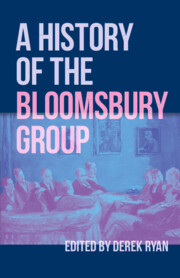
A History of the Bloomsbury Group
-
- Published online:
- 09 October 2025
- Print publication:
- 23 October 2025
Reading Commodities
-
-
- Book:
- Commodities and Literature
- Published online:
- 14 October 2025
- Print publication:
- 09 October 2025, pp 1-28
-
- Chapter
- Export citation
Chapter 13 - Water in World Literature
- from Part III - Applications
-
-
- Book:
- Commodities and Literature
- Published online:
- 14 October 2025
- Print publication:
- 09 October 2025, pp 228-243
-
- Chapter
- Export citation
20 - Christology and Political Theology
- from Part IIIb - Christology and Philosophical Theology
-
-
- Book:
- The Cambridge Companion to Christology
- Published online:
- 15 September 2025
- Print publication:
- 02 October 2025, pp 340-358
-
- Chapter
- Export citation
Chapter 1 - Life
-
- Book:
- The Cambridge Introduction to Ernest Hemingway
- Published online:
- 15 September 2025
- Print publication:
- 02 October 2025, pp 3-20
-
- Chapter
- Export citation
A criação de uma cultura moderna no Brasil: Nacionalismo e cosmopolitismo na Primeira República (1889–1930)
-
- Journal:
- Latin American Research Review ,
- Published online by Cambridge University Press:
- 22 September 2025, pp. 1-18
-
- Article
-
- You have access
- Open access
- HTML
- Export citation
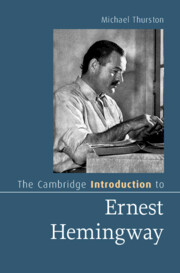
The Cambridge Introduction to Ernest Hemingway
-
- Published online:
- 15 September 2025
- Print publication:
- 02 October 2025
What is Cli-Fi?
-
- Journal:
- Australian Journal of Environmental Education / Volume 41 / Issue 3 / July 2025
- Published online by Cambridge University Press:
- 08 September 2025, pp. 409-419
-
- Article
-
- You have access
- Open access
- HTML
- Export citation
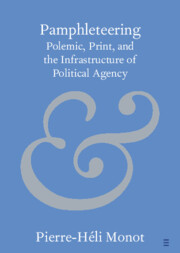
Pamphleteering
- Polemic, Print, and the Infrastructure of Political Agency
-
- Published online:
- 05 September 2025
- Print publication:
- 02 October 2025
-
- Element
-
- You have access
- Open access
- HTML
- Export citation
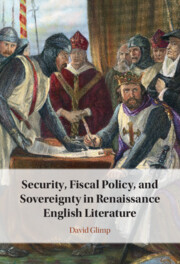
Security, Fiscal Policy, and Sovereignty in Renaissance English Literature
-
- Published online:
- 04 September 2025
- Print publication:
- 18 September 2025

How the World Became a Book in Shakespeare's England
-
- Published online:
- 09 August 2025
- Print publication:
- 14 August 2025
Chapter 13 - The Logics and Rhetorics of Theft in 1970s Feminist Writing
- from Part II - Histories
-
-
- Book:
- Money and American Literature
- Published online:
- 03 July 2025
- Print publication:
- 17 July 2025, pp 223-239
-
- Chapter
- Export citation
Chapter 6 - The Image of Psychiatry and the Figure of the Psychiatrist in Literature
- from Part II - The Present and the Future
-
-
- Book:
- Values in Psychiatry
- Published online:
- 24 June 2025
- Print publication:
- 10 July 2025, pp 93-105
-
- Chapter
- Export citation
Chapter 17 - AfroLatina Embodied Archives of Knowledge Production
- from Part IV - Theoretical Turns
-
-
- Book:
- Latinx Literature in Transition, 1992–2020
- Published online:
- 19 June 2025
- Print publication:
- 03 July 2025, pp 317-332
-
- Chapter
- Export citation
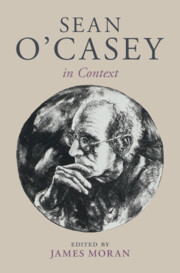
Sean O'Casey in Context
-
- Published online:
- 23 June 2025
- Print publication:
- 10 July 2025
